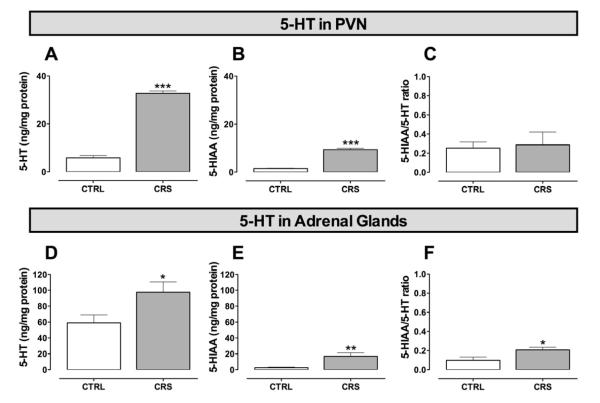Figure 4.
The impact of chronic restraint stress (CRS), as compared to daily 20 sec tail-lifting and home cage control (CTRL) conditions, on baseline levels of 5-HT and 5-HIAA, and the 5-HIAA/5-HT ratio in the hypothalamic paraventricular nucleus (PVN; A, B and C, respectively) and adrenal glands (D, E and F, respectively). In the PVN, the CRS paradigm induced a marked increase of 5-HT and 5-HIAA levels (A and B, respectively) with no change in the 5-HIAA/5-HT ratio (C) with respect to CTRL tissues. In adrenal glands, however, whereas CRS similarly induced a significant increase of 5-HT and 5-HIAA concentrations (D and E, respectively), it evoked a significant increase in the 5-HIAA/5-HT ratio (F) with respect to CTRL tissues thus suggesting increased 5-HT turnover. Bars represent the mean and vertical lines denote the standard error of the mean of 10 observations. * P < 0.05 vs CTRL; ** P < 0.01 vs CTRL; *** P < 0.001 vs CTRL.

